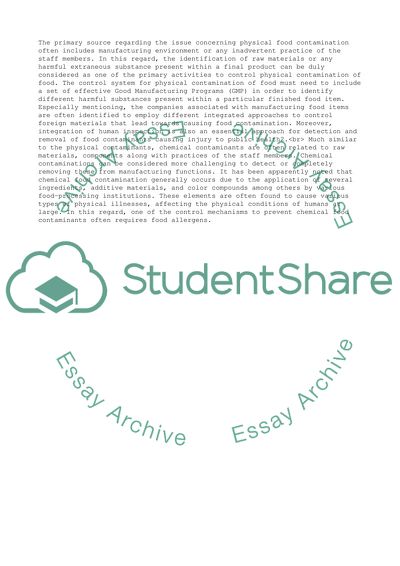Cite this document
(Food Safety Management Assignment Example | Topics and Well Written Essays - 2000 words, n.d.)
Food Safety Management Assignment Example | Topics and Well Written Essays - 2000 words. Retrieved from https://studentshare.org/management/1831369-food-safety-management
Food Safety Management Assignment Example | Topics and Well Written Essays - 2000 words. Retrieved from https://studentshare.org/management/1831369-food-safety-management
(Food Safety Management Assignment Example | Topics and Well Written Essays - 2000 Words)
Food Safety Management Assignment Example | Topics and Well Written Essays - 2000 Words. https://studentshare.org/management/1831369-food-safety-management.
Food Safety Management Assignment Example | Topics and Well Written Essays - 2000 Words. https://studentshare.org/management/1831369-food-safety-management.
“Food Safety Management Assignment Example | Topics and Well Written Essays - 2000 Words”, n.d. https://studentshare.org/management/1831369-food-safety-management.


